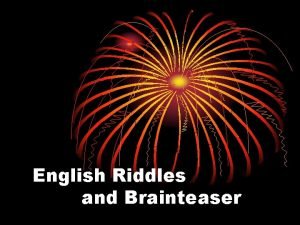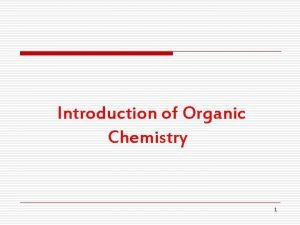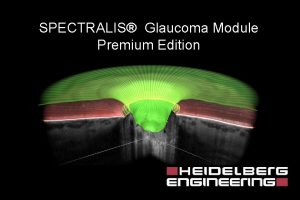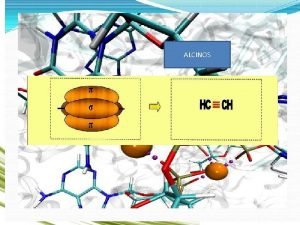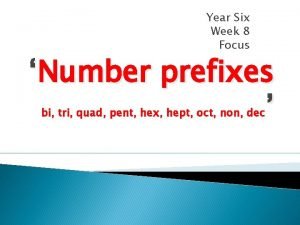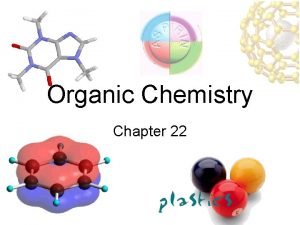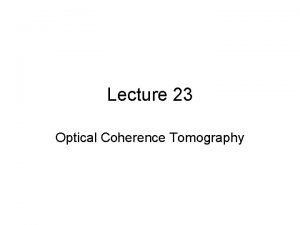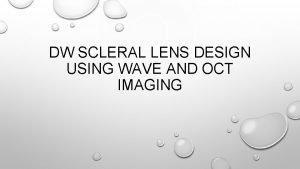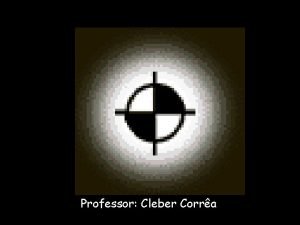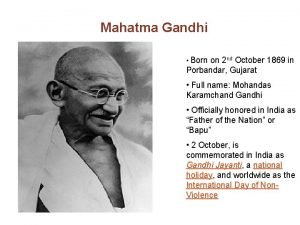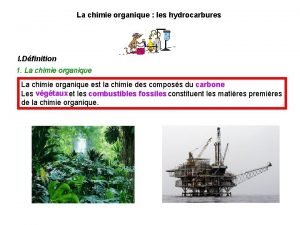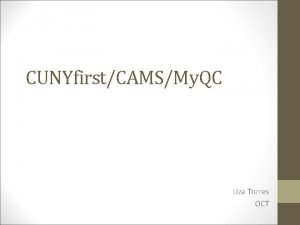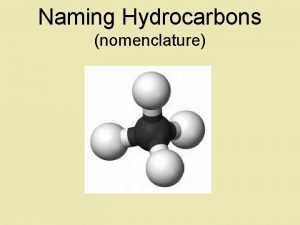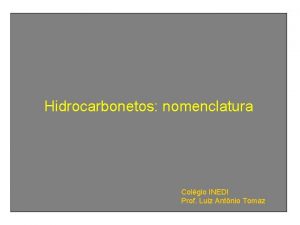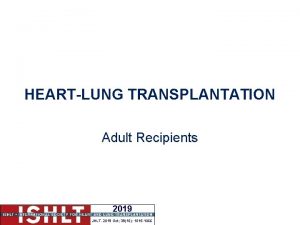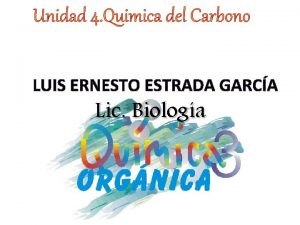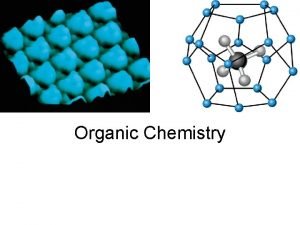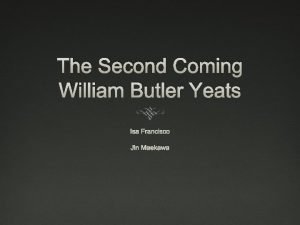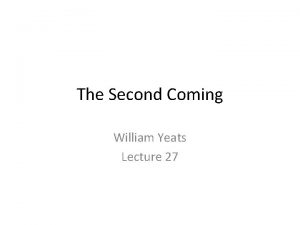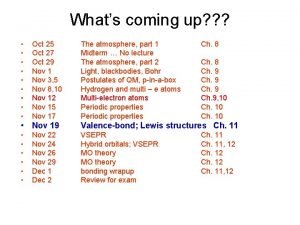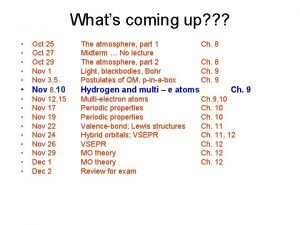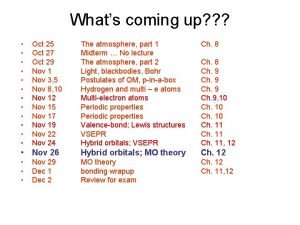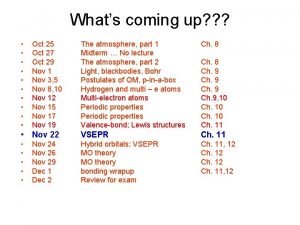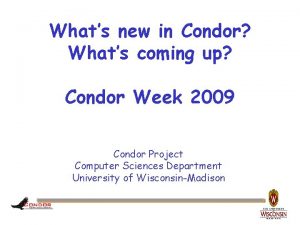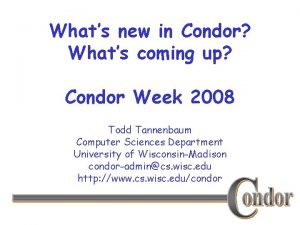Whats coming up Oct 25 Oct 27 Oct










































- Slides: 42

What’s coming up? ? ? • • • Oct 25 Oct 27 Oct 29 Nov 1 Nov 3, 5 Nov 8, 10 Nov 12 Nov 15 Nov 17 Nov 19 Nov 22 The atmosphere, part 1 Midterm … No lecture The atmosphere, part 2 Light, blackbodies, Bohr Postulates of QM, p-in-a-box Hydrogen and multi – e atoms Multi-electron atoms Periodic properties Valence-bond; Lewis structures VSEPR Ch. 8 • Nov 24 Hybrid orbitals; VSEPR Ch. 11, 12 • • MO theory bonding wrapup Review for exam Ch. 12 Ch. 11, 12 Nov 26 Nov 29 Dec 1 Dec 2 Ch. 8 Ch. 9, 10 Ch. 11




COMBINING ORBITALS TO FORM HYBRIDS HYBRIDIZATION : the combination of two or more “native” atomic orbitals on an atom to produce “hybrid” orbitals RULE: the number of atomic orbitals that are combined must equal the number which are formed All resulting hybrid orbitals are identical.

Note that these are +ive on one side of origin and -ive on the other!

HYBRIDIZATION Combine one s and one p a sp- hybrid + + ADD the orbitals 2 s+ 2 p

The positive part adds to positive part CONSTRUCTIVE INTERFERENCE 2 s+ 2 p + + The positive part cancels negative part DESTRUCTIVE INTERFERENCE

Combine one s and one p to give an sp- hybrid 2 s+ 2 p + REMEMBER IF WE MIX TWO WE MUST GET TWO BACK The other combination is s - p

The positive part adds to positive part 2 s- 2 p CONSTRUCTIVE INTERFERENCE + + The positive part cancels negative part DESTRUCTIVE INTERFERENCE

2 s- 2 p + We get two equivalent sp orbitals ORIENTED AT 1800

sp-HYBRIDIZATION The s and p orbitals The two sp-hybrids Directed at 1800

COMBINE one s-orbital and two p-orbitals Get three sp 2 - orbitals oriented at 1200 The s and p orbitals The three sp 2 -hybrids Directed at 1200

COMBINE one s-orbital and three p-orbitals Get three sp 3 - orbitals oriented at 109. 50 Back to methane

H METHANE: CH 4 four hybrid orbitals needed to form four bonds s + px + py + pz C H H 4 sp 3 hybrids H An atom with sp 3 hybrid orbitals is said to be sp 3 hybridized The four sp 3 hybrid orbitals form a tetrahedral arrangement.

When orbitals are hybridized they have the same energy: HYBRIDIZE 2 p E 2 s Orbitals in free C atom E sp 3 Hybridized orbitals of C atom in methane The FOUR sp 3 hybrids are DEGENERATE. sp 3 hybridization…….

sp 3 HYBRIDS sp 3 orbitals C Now form the bonds to the H-atoms……. . .

Each bond in methane results from the overlap of a hydrogen 1 s orbital and a carbon sp 3 orbital. Hydrogen 1 s orbital Carbon sp 3 orbitals H Form a chemical bond by sharing a pair of electrons. C H H H bonds

VALENCE BOND MODEL Hybrid orbital model Step 1: Draw the Lewis structure(s) Step 2: Determine the geometry of the electron pairs around each atom using VSEPR picture of molecular shapes Step 3: Specify the hybrid orbitals needed to accommodate the electron pairs on each atom

AMMONIA: NH 3 N H H H Electron pair geometry is tetrahedral Need sp 3 hybrids

sp 3 hybrids on N in AMMONIA N H H H

WATER Overlap of two of oxygen sp 3 hybrids with …. . H atom 1 s orbitals. To form two bonds. Lone pairs in two of the sp 3 hybrids. O H H Think about H 3 O+ !!!

HYDRONIUM ION. ISOELECTRONIC WITH …. . ? NH 3 H+ ion: empty 1 s orbitals. O H+ H H

Ethylene: C 2 H 4 H H C C H H trigonal planar electron VSEPR 0. a HCH angle of 120 pair geometry around each C-atom. three hybrid orbitals on each carbon for the trigonal planar electron pair geometry s + px + py 3 sp 2 hybrids The CARBON is sp 2 hybridized The 3 sp 2 hybrid orbitals form a trigonal planar arrangement. 3 effective electron pairs sp 2 hybridization

FORMATION OF sp 2 hybrids 2 p E 2 s GROUND STATE C atom E HYBRIDIZE 2 p sp 2 hybridized orbitals of C This leaves one p orbital unhybrized…….

An sp 2 hydridized C atom sp 2 - hybrid orbitals z UNHYBRIDIZED p- orbital y x The unhybridized p orbital is perpendicular to sp 2 plane.

bond z C x y H H BONDING IN ETHYLENE y C C H H z C x OVERLAP the sp 2 hybrids from the two carbons to form a sigma bond between them.

The two unhybridized p orbitals are left over to form a …. . z z H H y H x x pi bond (p bond)

H H C H

BONDING SCHEME IN ETHYNE p: C(2 p)-C(2 p) TWO OF THESE!! : H(1 s)-C(sp) H C C H : C(sp)-C(sp) What does this look like? ?

OVERLAP the C sp hybrids with H 1 s to form sigma bonds z C H x z y y C H x

LATERAL OVERLAP of p orbitals to form pi bonds. z H C z y y C x H x two pi bonds (p bonds)

What about molecules with more than an octet around the central atom? Examples: PCl 5, or SF 4 or Si. F 62 - etc…. . Four pairs needs Four orbitals Five pairs needs Five orbitals six pairs needs six orbitals So? ? ?

PCl 5 Cl Cl Cl We ignore the chlorine atoms Cl Cl and just describe central atom. Need five hybrid orbitals on the phosphorus P to fit the trigonal bipyramidal electron pair geometry d + s + px + py + pz 5 dsp 3 hybrids 5 effective electron pairs dsp 3 hybridization Five equivalent orbitals……. .

dsp 3 - hybrid orbitals TRIGONAL BIPYRAMID z 900 y 1200 x overlap with orbitals on chlorine to form 5 bonds.

SF 6 F F F S F F F We ignore the chlorine atoms and just describe central atom. We need six hybrid orbitals on the sulfur d + s + px + py + pz 6 effective electron pairs 6 d 2 sp 3 hybrids d 2 sp 3 hybridization SIX equivalent orbitals……. .

d 2 sp 3 - hybrid orbitals z 900 y 900 x overlap with orbitals on flourine to form 6 bonds.




EXAMPLES Describe the molecular structure and bonding in Xe. F 2 and Xe. F 4 F F Xe F 36 electrons … 8 bonding F 4 x 6 on the F atoms … 32 used so 4 more on Xe 6 electron pairs about Xe … octahedral Square planar d 2 sp 3 hybrids

EXAMPLES Describe the molecular structure and bonding in Xe. F 2 and Xe. F 4 F Xe F 5 electron pairs …. Trigonal bipyrimid Molecule is linear dsp 3 hybrids
 Canyouunit
Canyouunit Whats hot whats not
Whats hot whats not Meth eth
Meth eth Met et prop but pent hex hept oct non dec
Met et prop but pent hex hept oct non dec Premium sanitas
Premium sanitas Jhlt. 2019 oct; 38(10): 1015-1066
Jhlt. 2019 oct; 38(10): 1015-1066 Forneça a nomenclatura correta para os seguintes alcinos
Forneça a nomenclatura correta para os seguintes alcinos Tri quad pent hex
Tri quad pent hex Stil oct
Stil oct Saturated bond
Saturated bond Principle of oct
Principle of oct Jhlt. 2019 oct; 38(10): 1015-1066
Jhlt. 2019 oct; 38(10): 1015-1066 Scleral lens oct
Scleral lens oct Homologous series
Homologous series Visante oct
Visante oct Met et prop but pent hex hept oct non dec
Met et prop but pent hex hept oct non dec October 2, 1869
October 2, 1869 Organic chemistry vs biochemistry
Organic chemistry vs biochemistry Alkane formula
Alkane formula Prop but pent hex hept oct
Prop but pent hex hept oct Propylhexane formule semi-développée
Propylhexane formule semi-développée Jhlt. 2019 oct; 38(10): 1015-1066
Jhlt. 2019 oct; 38(10): 1015-1066 Cunyfirst
Cunyfirst Dodawanie w systemie czwórkowym
Dodawanie w systemie czwórkowym Structure of pentanoic acid
Structure of pentanoic acid Erg vizsgálat
Erg vizsgálat Meth eth prop but order
Meth eth prop but order Sunset oct 31
Sunset oct 31 Hidrocarbonetos ramificados
Hidrocarbonetos ramificados Jhlt. 2019 oct; 38(10): 1015-1066
Jhlt. 2019 oct; 38(10): 1015-1066 Propiedades quimica del carbono
Propiedades quimica del carbono Oct 3 1993
Oct 3 1993 Classification of hydrocarbons
Classification of hydrocarbons The second coming structure
The second coming structure First coming of jesus christ
First coming of jesus christ I lift my hands to the coming king lyrics
I lift my hands to the coming king lyrics Coming home meditation
Coming home meditation Coming of age unit
Coming of age unit The second coming 27
The second coming 27 Thank you for attending open house
Thank you for attending open house Wordington more tasks coming soon
Wordington more tasks coming soon Hello everyone thank you for coming
Hello everyone thank you for coming Spring is coming
Spring is coming
